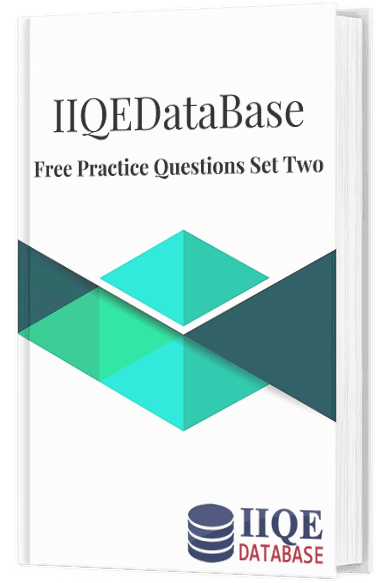Are you ready to delve into the intricate world of IIQE underwriting and rating of long-term insurance policies?
In this article, we will explore the essential concepts you need to comprehend to excel in the exam.
From the underwriting process and factors influencing ratings to risk assessment and the crucial role of medical underwriting, we will leave no stone unturned.
Join us as we unravel the methodologies used in determining premiums for long-term insurance policies.
Let’s embark on this analytical journey together.
Key Takeaways
- The underwriting process for long-term insurance policies involves assessing risk factors, determining appropriate premium rates, and making informed decisions.
- Factors that influence the rating of long-term insurance policies include claims management, actuarial analysis, individual circumstances and risk factors, and the financial stability of the insurer.
- Risk assessment in long-term insurance underwriting involves using underwriting criteria to evaluate risk profiles, adjusting premiums based on mortality tables and other factors, and ensuring accurate reflection of risk.
- Medical underwriting is important in long-term insurance policies as it involves evaluating medical history and health status, identifying pre-existing conditions and health risks, and ensuring accurate risk assessment.
Underwriting Process for Long-Term Insurance Policies
The underwriting process for long-term insurance policies involves assessing the risk factors and determining the appropriate premium rates. Underwriting guidelines play a crucial role in this process, providing a framework for evaluating risks and making informed decisions.
Risk management is at the core of underwriting, as insurers must carefully analyze various factors, such as the applicant’s age, health condition, occupation, and lifestyle habits, to assess the likelihood of a claim. By considering these factors, insurers can determine the level of risk associated with an individual and establish suitable premium rates that align with the potential costs.
Understanding the underwriting process is essential for insurance professionals, as it allows them to effectively manage risk and ensure fair and accurate pricing. This understanding sets the foundation for exploring the factors influencing the rating of long-term insurance policies, which will be discussed in the subsequent section.
Factors Influencing the Rating of Long-Term Insurance Policies
Factors that influence the rating of long-term insurance policies can vary based on individual circumstances and risk factors. When determining the rating of a policy, claims management and actuarial analysis are key factors to consider.
Here are three sub-lists to help you visualize these factors:
Claims Management:
The insurer’s ability to effectively manage and process claims impacts the overall rating of the policy.
Efficient claims handling ensures that policyholders receive the benefits they are entitled to, which can lead to higher ratings.
Poor claims management can result in delays and denials, negatively affecting the rating of the policy.
Actuarial Analysis:
Actuaries analyze various risk factors, such as age, health history, and lifestyle choices, to determine the likelihood of claims.
The more risk factors an individual presents, the higher the rating of their policy may be.
Actuarial analysis ensures that the premiums charged for the policy adequately cover the expected claims, maintaining the financial stability of the insurer.
Understanding these factors is crucial for insurance underwriters, as they play a significant role in determining the rating of long-term insurance policies. By considering claims management and actuarial analysis, underwriters can accurately assess the risk associated with each policyholder.
This transition into the subsequent section about risk assessment in long-term insurance underwriting provides further insights into the underwriting process.
Risk Assessment in Long-Term Insurance Underwriting
Risk assessment is a crucial factor in determining premiums for long-term insurance policies. It involves using underwriting criteria and mortality tables to evaluate the risk profile of potential policyholders. Underwriting criteria consider factors like age, gender, medical history, and lifestyle choices to assess the likelihood of a policyholder making a claim. Mortality tables provide statistical data on life expectancy based on age and gender. By analyzing these factors, insurance companies can determine the risk associated with insuring an individual and adjust premiums accordingly. This ensures that policyholders are charged premiums that accurately reflect their risk profile.
Medical underwriting is particularly important in long-term insurance policies as it determines eligibility and coverage for policyholders. It plays a significant role in assessing an individual’s health and medical history to determine the level of risk they pose. Insurance companies use this information to decide whether to offer coverage and at what cost. Medical underwriting helps ensure that policyholders receive appropriate coverage based on their health status and risk level. It helps insurance companies manage their risk and ensure that premiums are set appropriately for each individual.
Importance of Medical Underwriting in Long-Term Insurance Policies
Now, let’s take a closer look at why medical underwriting is so important when it comes to your long-term insurance coverage.
Medical underwriting is the process of evaluating your medical history and current health status to determine the level of risk you pose to the insurance company. It plays a crucial role in ensuring comprehensive underwriting, which is vital for accurate risk assessment.
Your medical history provides valuable insights into your overall health and potential future medical needs. It allows underwriters to assess the impact of your medical conditions on the policy’s coverage and premiums.
Through medical underwriting, underwriters can identify any pre-existing conditions, chronic illnesses, or other health risks that may affect your eligibility for coverage or the cost of your premiums.
Understanding the importance of medical underwriting sets the stage for exploring the role of underwriters in determining premiums for long-term insurance.
Role of Underwriters in Determining Premiums for Long-Term Insurance
The underwriter’s role in determining premiums for long-term insurance is crucial. They assess your overall health and potential future medical needs. Premium calculation involves a thorough analysis of various risk factors. These factors include age, gender, occupation, and medical history. Actuarial analysis is used to assess the probability of future claims and the financial impact they may have on the insurance company.
Underwriters carefully evaluate each applicant’s health status. They review medical records, conduct medical examinations, and consider lifestyle habits. They use this information to determine the appropriate premium to charge, based on the level of risk associated with insuring the individual.
Rating Methodologies for Long-Term Insurance Policies
In the previous subtopic, we discussed the role of underwriters in determining premiums for long-term insurance policies. Now, let’s delve into the rating methodologies used in the underwriting process.
Rating methodologies are essential tools that underwriters employ to assess the risk associated with insuring individuals or groups. Here are three common rating methodologies used in the underwriting process:
Experience rating: Underwriters analyze past claims data and the insured’s history to determine the likelihood of future claims. This method considers factors such as age, medical history, and occupation.
Community rating: This methodology sets premiums based on the average risk of a specific community or group. It ensures that everyone within the group pays the same premium, regardless of individual risk factors.
Attained age rating: With this approach, premiums are adjusted annually based on the insured’s age. As the insured gets older, the premium increases to reflect the higher risk of health-related issues.
Frequently Asked Questions
What Are the Common Types of Long-Term Insurance Policies?
Long-term insurance policies come in various types, each offering different coverage, benefits, and features. Common types include life insurance, disability insurance, and long-term care insurance.
Life insurance provides a death benefit to your beneficiaries upon your passing.
Disability insurance offers income protection in case you become unable to work due to an injury or illness.
Long-term care insurance helps cover the costs of nursing home care or in-home assistance when you are unable to perform daily activities.
How Do Underwriters Assess an Individual’s Medical History in the Underwriting Process?
When assessing your medical history, underwriters carefully evaluate your records to determine the level of risk you pose. They analyze your past and current health conditions, including any pre-existing conditions, surgeries, medications, and lifestyle choices.
What Factors Are Considered When Determining the Premium for a Long-Term Insurance Policy?
When determining the premium for a long-term insurance policy, several factors are taken into consideration. These factors can include your age, gender, occupation, medical history, lifestyle choices, and the coverage amount you desire.
Pricing considerations also come into play, such as the insurance company’s expenses, claims experience, and the overall risk associated with insuring you. By carefully assessing these factors, underwriters can calculate a premium that reflects the level of risk you pose to the insurance company.
What Are the Different Rating Methodologies Used for Long-Term Insurance Policies?
When it comes to rating methodologies for long-term insurance policies, there are several factors that come into play.
Risk assessment is a key component in determining the rating of these policies. Insurers use various methods to evaluate the risk associated with providing coverage over an extended period of time.
These methodologies take into account factors such as the insured’s age, health condition, occupation, and lifestyle choices. By analyzing these factors, insurers can assign an appropriate rating to the policy that reflects the level of risk involved.
How Do Underwriters Evaluate the Financial Stability of Insurance Companies Before Approving a Long-Term Insurance Policy?
When evaluating the financial stability of insurance companies during the underwriting process, underwriters consider various factors. They review the company’s financial statements, including its assets, liabilities, and cash flow.
They also analyze the company’s credit rating, as well as its historical performance and market reputation. By conducting this thorough evaluation, underwriters can assess the company’s ability to fulfill its obligations to policyholders over the long term.
This ensures that only financially stable insurance companies are approved for long-term insurance policies.
Conclusion
In conclusion, the IIQE underwriting and rating of long-term insurance policies exam concepts provide a comprehensive understanding of the intricate processes involved in assessing risks and determining premiums.
The underwriting process plays a crucial role in ensuring the financial stability of insurance companies, while factors such as age, health, and lifestyle influence the rating of these policies.
Medical underwriting holds immense importance in evaluating the insurability of individuals, allowing for accurate risk assessment. Underwriters, through careful analysis, determine the appropriate premiums that align with the level of risk involved.
Various rating methodologies further enhance the accuracy and objectivity of the underwriting process.
Through this juxtaposition of concepts, insurers can effectively mitigate risks and offer suitable long-term insurance options.



